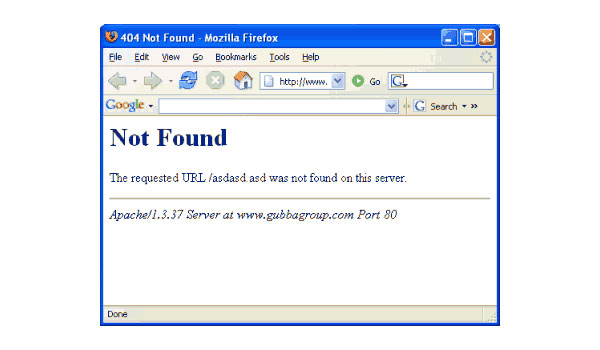
Arguably the error most encountered by Internet users, the 404 error appears whenever one tries to access a web page that has been deleted, renamed, or moved through an outdated link. The default message for the error is technical and contains information which for 9 out of 10 users is useless, and which often makes visitors leave your website. For this reason it’s recommended that you improve the 404 error page the visitors of your website get, by customizing it. Here are some ideas.
Explain the error plainly
Visitors to your website should understand why they get the 404 error, but unfortunately the default error page is not much enlightening, because it’s stuffed with jargon than most users don’t understand. So it’s a good idea to try to provide a plainer explication for why the error occurs. For starters, having the ‘Page not found’ message appear on the page is much more helpful than ‘404 error! Try again.
Don’t try to conceal the error
There are websites that automatically redirect a visitor who has stumbled over a 404 error to the homepage. Whether this is a good idea is questionable, but as an Internet user myself I find this redirecting often more annoying than helpful. Sometimes I am interested in a particular resource, and it’s better to know that it’s no longer available than to be sent to an irrelevant page. 404 errors are so common that there’s nothing shameful about them anymore, so better explain the reason for the error rather than redirecting to other pages. Alternatively, make redirection optional.
Ask visitors to check the address
Many users get the 404 error because they have misspelled the address of the page they seek. Simply reminding them that they may have done this may help them get to the page they want. Misspellings especially occur when the webpage address is long and stuffed with characters, so you may also want to consider making your webpage links shorter and simpler.
Help users find their way
Explaining why the 404 error occurs, and apologizing for it, is all very polite, but it’s often not enough. To help visitors find want they want, or at least something relevant, you could provide a list of your last updated, recently moved, or most popular web pages. Chances are visitors will find something relevant in that list and will click the link. By providing this guidance you don’t only help visitors find their way, but also make them desist from leaving your website.
Let visitors contact you
Providing an email address on your 404 error page is wise for two main reasons. First, it shows that you’re concerned about user experience. Second, it enables visitors to report the errors they find while browsing your website, and this helps you fix broken links quicker. You’re not limited to an e-mail address: it may be a contact form, or, if you have, for example, an e-commerce website with many product pages, even a telephone number. And remember that users must waste minutes contacting you, so ask them nicely and guarantee a fast reply.
Although 404 errors are common today, and few blush when they see them, it doesn’t mean that it’s okay to let them plague your website. These errors make your website look anything but professional,and they’re down right annoying. So try to fix any broken links, and to be efficient, set aside some time every once in a while especially for this simple operation. It’ll do your website much good.